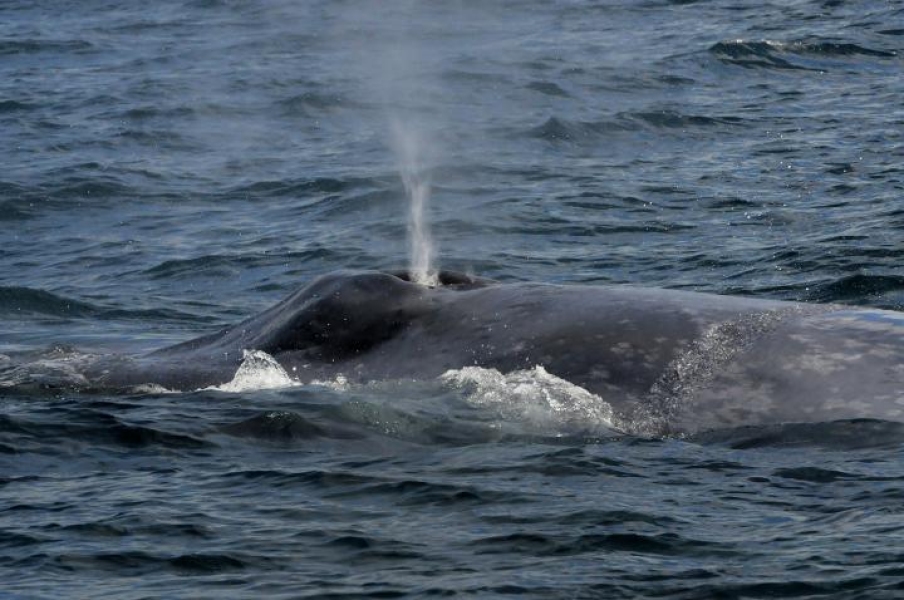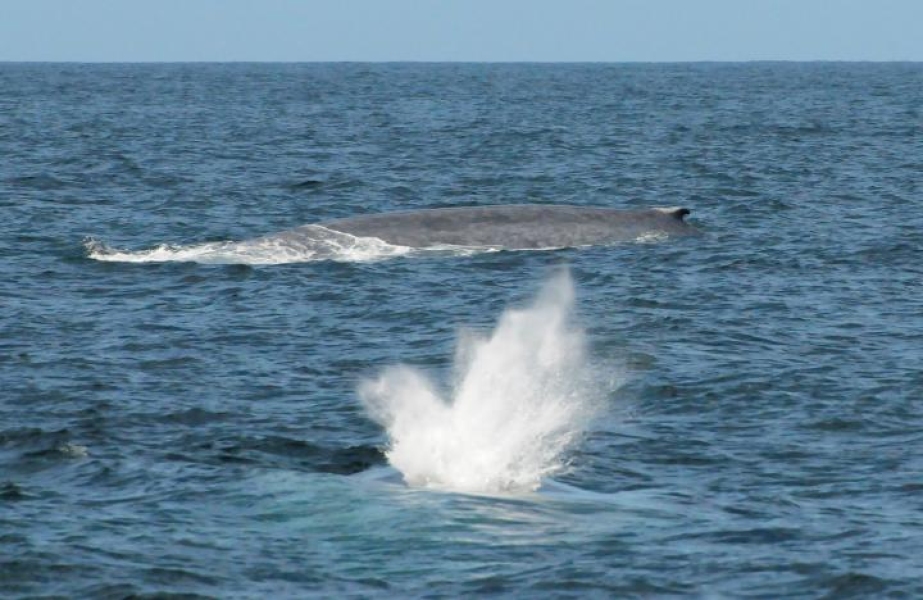Rare blue whales have been spotted by NIWA scientists on a research expedition in the South Taranaki Bight.
Sightings of the whales, the world's largest animal, are rare and they remain one of the planet's most elusive creatures. They were intensively hunted during the whaling era in the Southern Hemisphere, dramatically reducing their numbers.
NIWA marine ecologist Dr Leigh Torres is leading a team of blue whale researchers in the Bight on a journey that aims to collect critical data to enhance understanding of the blue whale population in the region. In the past week, the team has observed nearly 50 blue whales.
"It is very exciting to see these whales and start the process of collecting important data on this undescribed population and poorly understood foraging habitat.
"In addition to finding the whales, we were able to detect their prey visually on the surface and at-depth using hydro-acoustics," Dr Torres said.
Last year, Dr Torres published a scientific paper that discussed the possibility of a blue whale foraging ground in the South Taranaki Bight. Her research showed the presence of blue whales in the area was greater than expected. A recent increase in reported sightings was also linked to a prominent upwelling system that generates large clouds of plankton into the Bight - perfect for blue whales to feed on.
It was previously thought that the whales were only travelling through New Zealand waters while migrating.
Dr Torres said field work was the "next logical step to document the foraging ground and collect vital information on this blue whale population and their ecological patterns".
"Blue whales need to eat vast amounts of plankton to support their energy demands. But there are just four confirmed blue whale foraging grounds in the Southern Hemisphere outside of Antarctic waters."
The research team has taken hundreds of photos to identify the individual whales, tissue samples to genetically identify the individual whales and their prey species, acoustic recordings, prey samples and oceanographic data.
The research is being conducted onboard NIWA's coastal research vessel Ikatere. The research team comprises scientists from NIWA, The Blue Whale Study based in Australia and Oregon State University. Renowned blue whale scientist, Dr Pete Gill, said: "These blue whales exhibited very similar behaviour patterns to the blue whales we see feeding in the Bonney upwelling in Australia."
Funding for this project has been contributed by NIWA, the Department of Conservation, the Marine Mammal Institute at Oregon State University, the International Fund for Animal Welfare, Greenpeace New Zealand, and Todd Energy. This collaboration is possible through the logistical support and data analyses by NIWA, the Australian-based Blue Whale Study, University of Auckland, Oregon State University, Australian Antarctic Division, Cawthron Institute and the US Southwest Fisheries Science Centre NMFS/NOAA.


